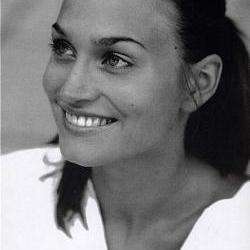Leoš Janáček’s opera The Cunning Little Vixen is the seventh offering from the Moravian composer. Janáček, while never abandoning his long term interests in folk music and declamatory-style writing, turned after a life of much unrest and complexity to a theme of apparent simplicity, shrouding much more complex issues: a fairy tale. Although meant and made for children, fairy tales are anything but simplistic. They are mythology for children, asking deep questions about life, death, love and purpose in a way that is appealing and accessible for little ones. And though Disney has put more sheen to these dark stories and gentrified them to the point of being almost too easy to swallow, even they cannot rid the stories completely of evil stepmothers, poisoned apples, witches baking children in ovens or wolves stalking young ladies wearing telling red capes.
In Otto Schenk’s self-proclaimed final directorial effort at the Staatsoper after a career in the house spanning half a century, he has done a brilliant job of reflecting the work as conceived. Schenk remains true to the beautiful, childlike themes of the fairy tale and lets the darker elements speak (and shock) for themselves. Thank the heavens! Just as the themes of coming into womanhood, fear and love and malevolence are all beautifully contained in the apparently simple tale, a lesser talent than Swedish director Ingmar Bergman would completely ruin the aesthetic by making the story anything more than it is inherently. There are other ways of laying out this opera and underlining its deeper, hidden complexities, but the fact is, it stands alone absolutely effectively without any extra muddying of the psychological waters.
Schenk’s production, effectively realized by a strong ensemble of singers and the breathtakingly magical costume and set design by Amra Buchbinder is, however, anything but simplistic and old-fashioned. It is adorable, but also highly detailed and textured, bringing to mind (and thoroughly trumping) the best parts of The Magic Flute première from earlier this season.
From the trees which open the work, through the scores of insects, reptiles and mammals that dance, twitch, flutter, hop and chirp throughout (bravo, chorus children and their magnificent direction: more adorable and thoughtfully developed beetles, fox cubs, frogs, dragonflies, rabbits etc. are not to be found, even in Disney), to the contagiously mischievous little vixen herself (beautifully portrayed by Chen Reiss) this was thoughtfully directed and realized. The detail in the leaves of the trees, the sensitivity to lighting (Emmerich Steigberger), the extravagance of the owls’ feathers, the gloss of the beetles, the joy with which the animals somersaulted their way down mossy hills, and the kid-friendly lovemaking of foxes- everything felt like what fairy tales should be. Even the death of the vixen, though appropriately shocking and sad, was not a drawn-out tragedy as sometimes depicted. Instead, as in the best fairy tales, the story ends on a note of hope. The circle of life keeps turning and despair breeds new meaning. A little frog hops into the hunter’s lap, as did his grandfather before him, leading him to a fox cub that reminds him of his fallen vixen. He takes it home, promising to do things better this time.
Musically, Janáček’s opera is the antithesis to the long, sung, legato line. Janáček despised the Wagnerian school of epic opera and preferred declamatory, unfinished phrases full of short motifs which he named “sčasovka”. The music is easy to get lost in with its plentiful edges, waves and lack of long formal conclusiveness, but rich in layer, motif and colour. Moreover, there is really only one true aria (sung beautifully by Gerald Finley's Forester) and one tuneful duet for the Vixen and Fox (charmingly and capably delivered by Chen Reiss and Hyuna Ko). Apart from those moments, the voice is used highly instrumentally- even percussively at times. In general, the orchestra is the key player and the singers are simply solo, orchestral instruments, popping in here or there but on equal footing with their fellows. Franz Welser-Möst led the sure-footed orchestra effectively, and while there were moments the ensemble threatened to overwhelm the singers, it never completely did. The rest of the singers were equally well-cast, including Wolfgang Bankl (Harašta), Heinz Zednik (Rooster), James Kryshak (Schoolmaster) and Andreas Hörl (Priest).
Congratulations to the Staatsoper for ending its 2014 season with a charming première and directorial swansong appropriate for the entire family. Those who have not taken in the production this season will have to hold their breaths until November for its return, but the wait will be well worth it.




